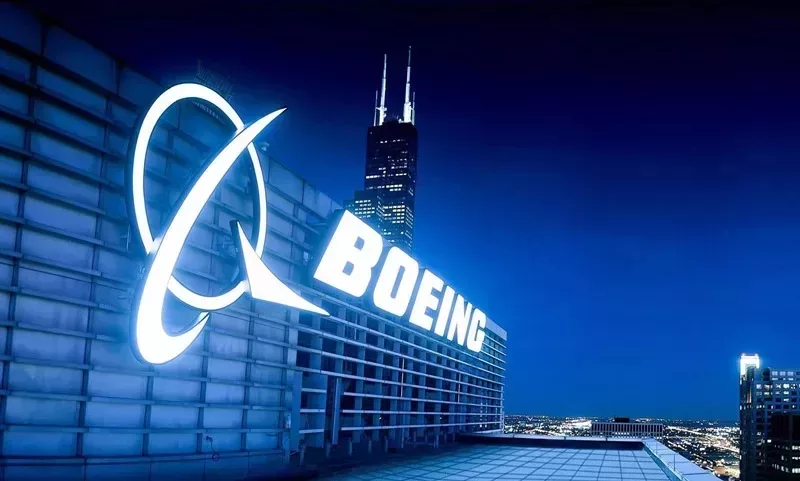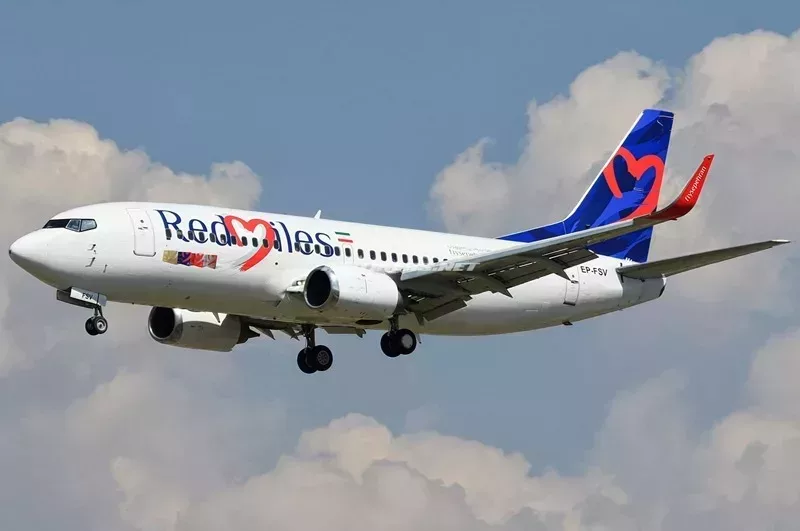
وبلاگ سپهران | Airlines | Boeing Airplane | Introduction + Various Boeing Models
The Boeing airplane is more than just an aircraft. You might recognize this airplane for its iconic airplanes, but the company provides services that go beyond a comfortable seat at 30,000 feet. This airplane, as one of the largest manufacturers of commercial and passenger airplanes in the world, plays a vital role in global transportation. so, symbol of innovation and advancement in the aerospace industry.
So, this aircraft is one of the marvels of aerospace engineering, capable of handling the longest routes and compatible with every spectrum of weather conditions. As a global aerospace company, it manufactures and supplies commercial airplanes, defense products, and space systems to clients in over 150 countries. In this post from Sepehran blog, you will become acquainted with various types of this airplanes, as well as their maintenance and safety.
Boeing has a valuable history of aerospace innovation from the past to the present. The company continues to expand its production line and services to meet the emerging needs of its customers. A broad spectrum of its capabilities includes introducing newer and more efficient members to its commercial airplane family. It is involved in the design, manufacturing, and integration of military platforms and defense systems, creating advanced technology solutions and arranging financial options and innovative services for its clients.
This airplane showcases one of the most diverse, talented, and innovative workforces everywhere.
The company is currently organized into three business units: Commercial Airplanes | Defense, Space & Security, and Boeing Global Services.
This airplane Capital Corporation, a global provider and supporter of financing solutions, backs these units.

This aircraft was established in 1916 by William Boeing in the city of Seattle, one of the coastal cities of Washington. Currently, Boeing holds the title of the world’s largest aircraft manufacturer, and over the decades, its operations have been dedicated to producing passenger aircraft. As time passed and with the advancements the company achieved in the aviation industry, in 1997, this aircraft merged with the aircraft engine manufacturer McDonnell Douglas, becoming the largest aircraft producer in the world.
These Company is broadly composed of four main divisions, each having its specific tasks and responsibilities:
These divisions operate as the core segments of the this Company, playing a fundamental role in the production of aircraft and related services.
This airplane has always been striving to enhance technology in its aircraft, utilizing the latest scientific achievements and technologies in its manufacturing. The company endeavors to present high-efficiency, safer, and better-performing aircraft by leveraging various innovations.
This airplane uses lightweight and robust materials, such as composites (a mixture of carbon fibers and a matrix of polymeric materials), to reduce the weight of the airplanes and enhance efficiency. These materials contribute to achieving high density and resistance to corrosion.
This airplane employ powerful and efficient engines that utilize new technologies to reduce fuel consumption and CO2 emissions.
This airplane utilizes advanced aviation systems for flight control and navigation. This includes technologies like “Fly-by-Wire” (electronic flight control) and the “AutoPilot” system.
This aircraft use advanced electronic systems for flight control, safety, and data management. These systems include EFIS (Electronic Flight Instrument System) and FMS (Flight Management System).
This airplane prioritizes enhancing flight safety and preventing incidents. This includes safety systems such as TCAS (Traffic Collision Avoidance System) and GPWS (Ground Proximity Warning System).
Boeing employs the latest innovations in the interior cabin design of its airplanes to enhance passengers’ experience. This innovation includes various entertainment systems and passenger comfort.
This airplane pays special attention to high fuel efficiency in its aircraft. This focus significantly helps reduce costs associated with flying.
Many these airplanes now provide internet connectivity for passengers, allowing them to benefit from in-flight entertainment.
Boeing also uses artificial intelligence (AI) for improving maintenance forecasting and after-sales services.
These advanced technologies in Boeing aircraft contribute to the efficiency, safety, and compatibility of these airplanes with current and future needs, playing a significant role in the development of the aerospace industry.
As one of the largest manufacturers of commercial and passenger aircraft in the world, Boeing has significant impacts on the environment. These impacts can be positive or negative, and this aircraft is committed to reducing negative environmental effects by improving technologies and production methods. We will examine some of the technologies and environmental impacts of the this company:
Given this airplane emphasis on efficiency and green technologies, the company endeavors to reduce its negative environmental impacts and contribute to the development of sustainable environmental technologies.
This airplane is an American multinational corporation operating in the aerospace and defense industries. The company undertakes a wide range of activities, including the following:
Manufacturing of Military and Commercial Aircraft: This aircraft is one of the world’s largest aircraft manufacturers. Its operations span passenger aircraft, military aircraft, cargo planes, and commercial airplanes. Notable Boeing products include the 737, 747, 777, 787 aircraft families, and military aircraft like the F-15 and F-18.
Military and Defense: This company is also active in the production of military and defense equipment and systems. The company manufactures military hardware such as fighter aircraft, drones, IT and electronic-based military systems, and communication systems.
Services and Support: This airplane provides after-sales services for its aircraft, including repair and maintenance services, supply of spare parts, training for staff and customers, and technical support.
Space Equipment: This aircraft is activated in space-related equipment and technologies. So, the company engages in research and development for space projects, including satellites and space apparatuses.
Aviation-Related Technologies: This airplane conducts research in technologies related to aviation. These technologies include fuel efficiency improvements, data analysis technologies, and environmental innovations like electric airplanes.
As one of the largest aerospace and defense companies globally, this airplane operates in various domains, offering a wide array of products and services that cater to the needs of the aviation and military industries worldwide.
This Company is one of the world’s largest aircraft manufacturers, producing various types of airplanes. Below, I will list a few examples of the famous Boeing aircraft models:
Boeing 737: This is one of the most famous and highly ordered families of Boeing aircraft, produced in different generations from the 737-100 to the 737 MAX. This airplane is suitable for short- and medium-haul flights.
Boeing 747: A large wide-body, double-decker airplane, initially produced as a passenger aircraft, it was later ordered as a cargo plane by various companies. The Boeing 747 has been produced in different generations such as 747-400, 747-100, 747-200, 747-300, and 747-SP.
Boeing 777: Part of Boeing newer series, this twin-jet engine aircraft is suitable for long-haul flights. Various models of this aircraft are available, such as the 777-200, 777-300, and 777X.
Boeing 787 Dreamliner: A newer and modern production by Boeing that features lower fuel consumption. This aircraft is suitable for long-haul and some medium-haul flights.
Boeing 707: The Boeing 707 was one of the first jet airplanes manufactured by this airplane, known as a narrow-body, long-range, four-engine jet. So, this airplane entered the production line in 1957 and took flight as Boeing’s first passenger jet aircraft.
Note that this airplane has had various models of aircraft in production and updates throughout its history and is also developing new models. These are just a few examples of Boeing models, and new productions may be introduced in the future.
The repair and maintenance of Boeing aircraft are vital aspects of the industry, and the proper execution of these processes is crucial for the safety and efficiency of the airplanes. Maintenance and repair of Boeing aircraft are primarily performed by companies or specialist mechanics trained by the manufacturer itself. The main steps are as follows:
Initially, for each aircraft, maintenance planners schedule repairs and upkeep based on aviation regulations and the manufacturer’s (Boeing’s) guidelines.
These plans include periodic maintenance (such as replacing parts and equipment) and repairs based on the occurrence of immediate needs (known as unscheduled or corrective maintenance).
This includes periodic maintenance, replacement of consumable parts such as oils, filters, thermocouples, lenses, and so forth.
Also, the replacement of wires, cables, and electrical components falls into this category.
This type of repair is carried out following urgent and unavoidable needs. It may be required in response to sudden technical issues or incidents involving the aircraft.
Unscheduled repairs may include replacing damaged parts, engine replacement, or swapping out electrical components.
Periodic inspections are conducted in accordance with the flight hours of the aircraft. These inspections include evaluations of components, such as the aircraft body, wings, controls, and electrical systems.
Repair and maintenance of electrical and electronic systems, including navigation, flight control systems, and communication equipment, are extremely vital.
The repair and maintenance of aircraft engines are very crucial. This includes the replacement and repair of engines and their associated systems.
After repairs, operational tests are conducted to ensure that the aircraft is functioning correctly.
These procedures are carried out with high speed and precision to ensure the safety of flights and the efficiency of the aircraft. So, these processes must be meticulously performed according to global aviation standards and the manufacturer’s guidelines.
This company, like other aircraft manufacturers, maintains very high safety standards. Reputable aviation companies like Boeing are committed to adhering to stringent aviation safety standards in producing their safe aircraft. These standards and guidelines are determined and overseen by various global and national aviation organizations.
The FAA holds significant credibility in terms of safety and oversight of commercial aircraft in the United States and worldwide. All commercial aircraft must be produced and maintained in accordance with FAA standards and guidelines.
ICAO is an international organization that sets global standards and guidelines for aviation safety. All countries adhere to these standards.
Furthermore, this airplane and other aviation companies continuously dedicate resources to the research and development of technologies and processes that enhance flight safety. This includes employing advanced technologies to mitigate potential flight-related risks and improving issues related to the maintenance and repair of aircraft.
Through meticulous adherence to aviation safety standards and the continuous implementation of relevant aircraft repair and maintenance, This aircraft and other aviation companies place great emphasis on maintaining flight safety. Additionally, flight crews and dedicated maintenance and repair engineers are trained and committed to flight safety. Overall, this aircraft are recognized for flight safety, complying with high safety standards, and utilizing advanced technologies.
This aircraft plays a very significant role in the global transportation industry. So, the aircraft produced by this company have a widespread impact on global transportation and are influential in many aspects of the industry, including:
Passenger Transportation: This passenger aircraft, including models like the 737, 747, 777, and 787 Dreamliner, are used for passenger transportation. These airplanes facilitate the comfortable and rapid travel of passengers to various global destinations.
Cargo Transportation: This company freighter aircraft are utilized for the transportation of goods and cargo on a global scale. These airplanes are in demand for transporting excess cargo, time-sensitive goods, and large items.
Military Transport: This airplane also manufactures military aircraft that are used by armed forces and for conducting military operations. These aircraft include the P-8 Poseidon and E-3 Sentry.
Financial Services: Boeing Capital, as a part of the this company, dedicates itself to providing financing for Boeing’s manufactured aircraft and related products and services. These financial facilities assist this aircraft buyers and clients in achieving greater efficiency from their airplanes and associated services.
Employment and Economy: The production of aircraft and related services, including repair and maintenance, promotes job creation and economic development in various global regions. Workers, engineers, maintenance staff, and others involved in the supply chain and services related to aircraft find employment.
Overall, with its production of modern, high-efficiency, this airplane has a significant impact on global transportation and plays a key role in safety, efficiency, and the global economy.
Currently, FlySepehran, as the largest user of Boeing aircraft in Iran among domestic airlines, has expanded its operations in recent years
Flysepehran introduced the newest Boeing aircraft into its fleet with a fresh livery of the RedMiles customer club, serving as the brand ambassador for the customer club.
This aircraft is a Boeing 737-400 series with the registration EP-FSV. The plane’s paint job has been done with FlySepehran new design, and the number of seats in Sepehran new Boeing 737, also known as the ambassador of the REDMILES Club, totals 144.

More Information About FlySepahan Fleet
This aircraft are one of the aerospace engineering wonders of the world, capable of flying the longest routes. In this article, we have examined various types of Boeing aircraft and tried to present details about their history, technologies, environmental impacts, and their role in global transportation.